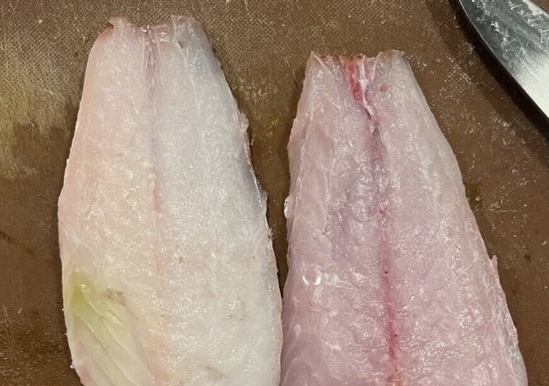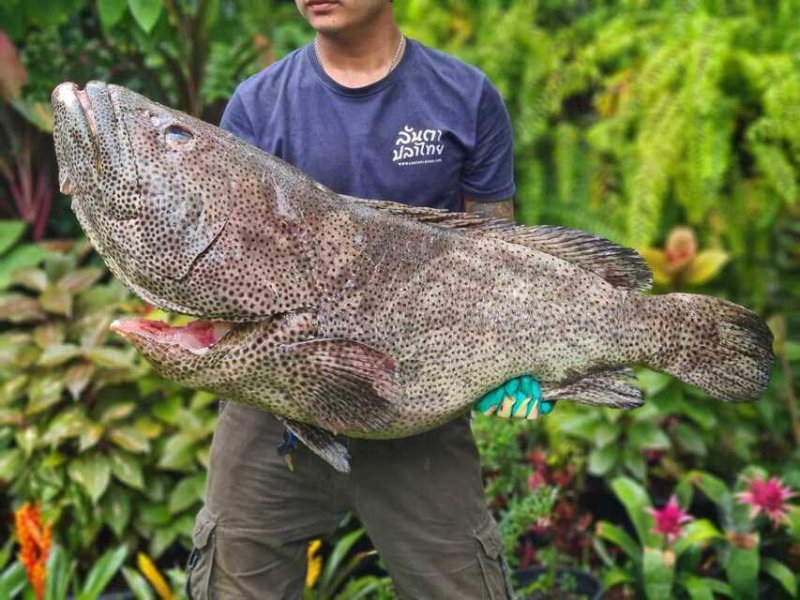In a downtown Bangkok restaurant these days, there’s a good chance you’ll see “Catch of the Day” written on the board—whether it’s Thai fish, imported fish, or whatever their fish supplier could provide that day.
Thai beef received a wellspring of support on the Bangkok foodie scene around three years ago, and today it's common and respected on menus nationwide. Is Thai fish heading in the same direction?
Photo: Dukedon
Good quality but preservation lacking
“The quality of Thai fish is undoubtedly competitive compared to imported fish, but our fishers are still not knowledgeable enough to preserve their catch properly,” says Prutkumpond “Sarm” Salak, one of the owners of
Dukedon, a restaurant serving a Japanese rice bowls using
pla duk [Thai catfish]. “Different fish need different styles to…highlight their taste.”
Unlike Japan, the art of preservation for Thai seafood is not yet that advanced and only a few fishers in Thailand know how to do it at a quality that restaurants need.
“Our fishers still work with a sense that more is better, not better quality,” says Tanisorn “Orb” Wasinapas from Kensaku, a Japanese restaurant that offers Thai fish on their menu. “They don’t want to spend so much time going into too much detail on how to preserve their catch. But sometimes, for products of nature, more is not always the best answer.”
“They don’t need to catch more fish to make more. If they would nourish and cherish the proper way of catching and preserving them, they would be able to sell the fish for more money,” says Kasama “Ohm” Chudokmai from
Fishmonger, a fish and chips place serving only Thai fish; he works closely with Koh Lanta fishers through his
Lanta Pla Thai fish supplier business.
Perceptions are shifting, thanks to passionate people like Orb or Ohm and more who have been teaching the locals proper preservation techniques. So, expect more and better quality Thai fish in the market in the coming near future.
Photo: Samlor
Customers seek familiarity
“[When I opened Lanta Pla Thai] At first, it was very difficult to sell uncommon fish,” says Ohm, who supplies his catch from Koh Lanta to a few restaurants around Bangkok. “But now, my customers trust me, so if I have some unusual fish, they are happy to try it.”
The market for Thai fish is not yet sustainable enough for suppliers to bring Thai fish to the Bangkok market. There’s a risk of not being able to sell it. With the lack of preservation properly, suppliers and chefs have very limited time to work with these fish.
“If I ask a Thai person to name all the Thai fish they’ve had in their lives, I guarantee most people wouldn’t be able to name more than five,” says Napol “Joe” Jantraget, founder and executive chef of
Samlor, a Thai restaurant elevating gap glaem [drinking food]. “Though, recently, the reception from customers has been really good. Some customers even buy fresh Thai fish from us to cook at home. This is a good sign.”
He also agrees with Ohm that it helps a lot for the customers to develop trust with the suppliers by knowing where the fish are from and who they come from.
We’ll get there, but it takes time
“It’s all about timing,” says Joe. “We are still at the very beginning stages of Thai fish, I think maybe one to three years, just like Thai ingredients in general about five or six years ago.”
Ohm from Fishmonger and Lanta Pla Thai also agrees, “I’m predicting that in two years it will be like Thai beef. Now Thai beef is accepted by consumers, and it just takes some time to spread the word.”
“Thai people’s value of local ingredients is still not the best, and that’s sad because these products have so much value—Thai ingredients are better than ever,” says Joe. “Champagne has value and global recognition today because local people believed in its value first.”
Joe also says that even though it’s going to take some time for perspectives of Thai fish and Thai ingredients in general to change, he believes in the power of younger generations.
Photo: Lanta Pla Thai


